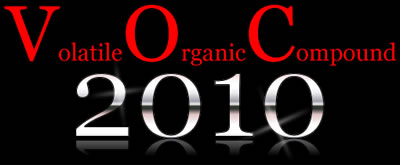Painting, decorating and home improvement tips blog
Water-based or Oil-based: Always read the label
Posted by Adrian
August 15th, 2011
Water-based or Oil-based paint? Always read the label
When you buy paint you should always read the label printed on the tin, not only to see what the manufactures say you should do, but also to find out the type of paint you are using.
Sounds like a silly question, but if you are using a gloss or satinwood finish, is it water-based (or acrylic) or is it an oil-based product?
By knowing weather it is water-based or oil-based it will determine a few things, such as drying times, the application method you may want to use, and what you need to use to clean your brushes with, either water or brush cleaner/white spirit.
Things to look out for;
The symbols on the tin. It should have a symbol saying “clean brushes with water” or “clean brushes with brush cleaner” for oil based paints.
The VOC level will be low to medium on water-based paint and high on oil based.
Why do you need to know this information?
Knowing if the paint your using is oil or water based could help you make a decision about what type of paint to buy, if you prefer oil-based paints as you find them easier to work with than water-based paint, or do you prefer water-based as it dries quicker? As you need to get a job done before it rains, or the kids come home!
It also good to know if you can simply wash your brushes in water or if you have to wash then in brush cleaner such as white spirit. You don’t want to be washing them out in the wrong thing, or storing them incorrectly as this will ruin your brush.
Tags: Gloss, Oil-based paint, Satinwood, VOC, VOC 2010, VOC 2011, water-based paints
Posted in Decorating Tips | No Comments »
VOC 2010 : Update
Posted by Adrian
February 1st, 2011

VOC in 2011
Many of you may of heard about VOC’s but are unaware what they are and what it all means.
VOC stands for Volatile Organic Compound, what that you may ask, VOC’s are solvents within solvent-based paints such as gloss, undercoat and varnishes. These solvents evaporate into the atmosphere as the paint dries. You can tell how high the VOC’s are in a tin of paint normally by the distinctive smell you get off from them, gloss has a high VOC content where as emulsion has a low VOC content.
If you look at the side of the paint tin it will have a symbol and also some writing about the VOC content in the tin.
VOC’s contribute to environmental air pollution and in turn damage the ozone layer.
In the past year there has been a lot of news in the press about paint being ‘VOC Compliant’. From the 1st of January 2011 the sale of non-compliant products will be forbidden.
So can I still buy and use non-compliant paint
As from January 2011 you are unable to buy non-compliant paints, as it is now illegal to sell them. If you have older paint, say in the garage or shed, you are still allowed to use them. It maybe worth thinking about if you will need more paint than what you already have as the new VOC compliant paint may differ slightly to the older paints you have.
Search online for more information about VOC’s and the current law.
Useful links
Some related links:
Tags: 2011, Emulsion, Solvent-based paint, VOC, VOC 2010, Volatile Organic Compound
Posted in Decorating Tips, News | No Comments »
VOC 2010
Posted by Adrian
January 1st, 2010

The new VOC legislation
From today (January 1st 2010) there is new legislation regarding the amount of VOC’s (Volatile Organic Compound) in paint. Based on the EU directive 2004/42/EC the amount of VOC’s has to be reduced. From the 1st of January 2010 the production of non-compliant paint is banned and from the 1st of January 2011 the sale of non-compliant products will be forbidden.
So what is the need for this new legislation?
VOC’s are solvents within solvent-based paints such as gloss, undercoat and varnishes. These solvents evaporate into the atmosphere as the paint dries. You can tell how high the VOC’s are in a tin of paint normally by the distinctive smell you get off from them, gloss has a high VOC content where as emulsion has a low VOC content.
If you look at the side of the paint tin it will have a symbol and also some writing about the VOC content in the tin.
The solvents or VOC’s contribute to environmental air pollution and in turn damage the ozone layer.
Many VOC 2010 compliant paints have been on the market for a while now, such as emulsions but for paints such as undercoat and gloss that have higher VOCs these will now be clearly marked as being VOC 2010 compliant.
So does having lower VOC’s affect the paint?
For most DIY painters and decorators there will not be any noticeable changes but for the professional painter and decorator who uses paint all the time, some changes will be noticed. These include:
- Longer drying times
- Yellowing quicker
- Higher sheen level
- Separation in the paint can
So can I still use non-compliant paint?
If you are an applier rather than a manufacturer or supplier you can still use non-compliant paints.
Manufactures cannot make non-compliant paints from today and suppliers have until next year (01.01.2011) to stop stocking and selling non-compliant paints.
For more information, search for VOC 2010.
Tags: Emulsion, Solvent-based paint, VOC 2010, water-based paints
Posted in News | No Comments »
